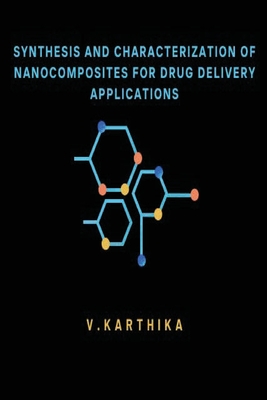You are here
Back to topSynthesis and Characterization of Nanocomposites for Drug Delivery Applications (Paperback)
Description
The synthesis and characterization of nanocomposites for drug delivery applications is an emerging field that aims to develop safe and effective drug delivery systems with enhanced therapeutic efficacy. Nanocomposites are composed of different types of nanoparticles, polymers, and other materials that can be precisely engineered to achieve specific drug delivery goals. These materials are typically biocompatible and biodegradable, allowing for controlled release of drugs over an extended period of time.
The synthesis and characterization of nanocomposites involve the preparation of the nanoparticles and their subsequent incorporation into the polymer matrix or other material. Different types of nanoparticles, such as magnetic nanoparticles, gold nanoparticles, carbon nanotubes, and lipid-based nanoparticles, can be utilized depending on the intended application. Surface modification techniques can be employed to enhance the stability, biocompatibility, and specificity of the nanocomposites for targeted drug delivery.
Characterization of nanocomposites is crucial to understanding their physicochemical properties, drug-loading capacity, and drug release kinetics. Techniques such as dynamic light scattering, scanning electron microscopy, transmission electron microscopy, X-ray diffraction, and Fourier-transform infrared spectroscopy can be used to characterize the nanocomposites.
The use of nanocomposites for drug delivery applications has several advantages, including improved drug solubility, enhanced bioavailability, and reduced toxicity. Moreover, the development of stimuli-responsive nanocomposites that respond to changes in environmental factors such as pH, temperature, and magnetic field can further enhance drug delivery efficacy.
The synthesis and characterization of nanocomposites for drug delivery applications represent a promising approach for the development of safe and effective drug delivery systems with enhanced therapeutic efficacy. However, further studies are needed to optimize the design of nanocomposites and to assess their toxicity and biocompatibility.
Nanomaterial has promising application of all technology development. Nanomaterial has one or more dimension in the nanometer scale (100 nm) range and
subsequently show novel properties from their bulk materials. Nanotechnology, led by the
development of nanoparticles (NPs) -based drug delivery systems and imaging contrast
agents, has had an important role in diagnosis, prevention, and treatment of the
disease. The use of nanotechnology for cancer therapy and imaging is expected to overcome
the limitations of conventional treatments, such as poor drug bioavailability,
nonspecific systemic drug distribution, inadequate drug concentrations reaching the tumor and
inability to monitor therapeutic responses in real time.
